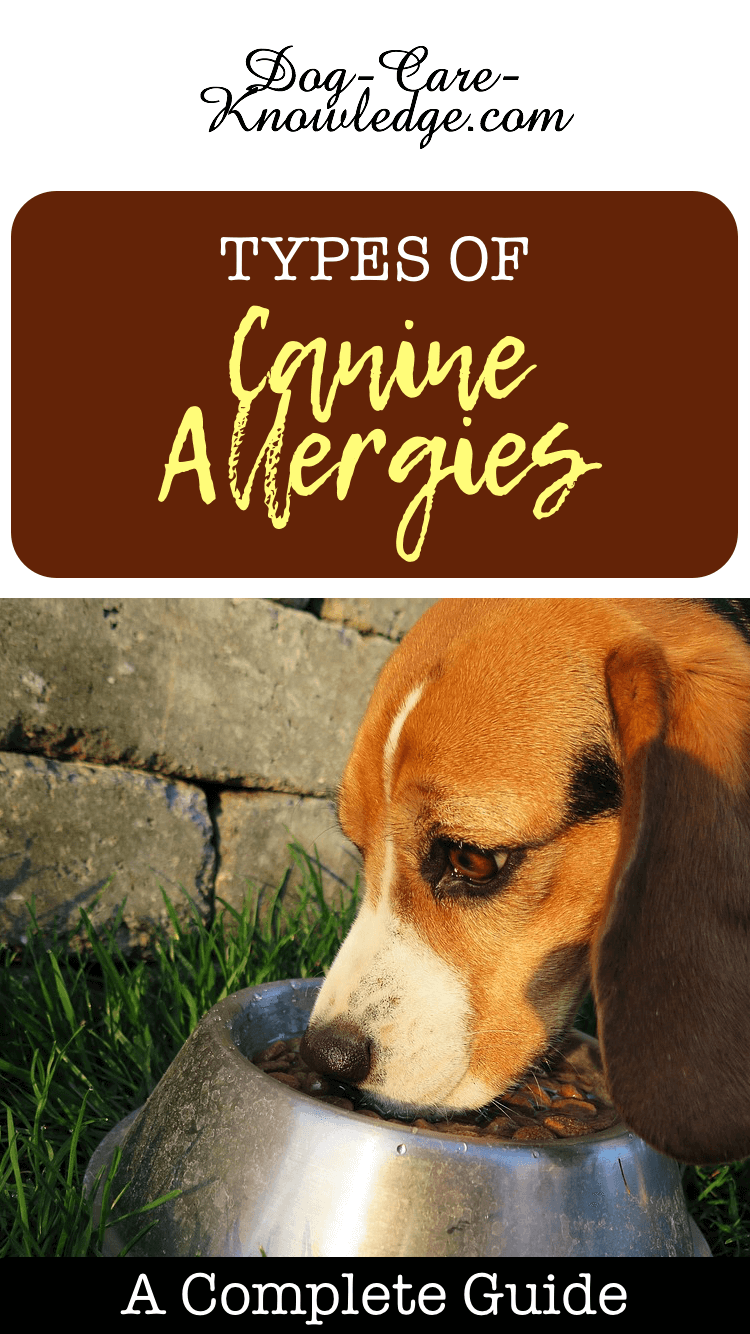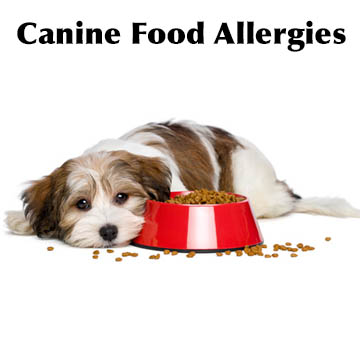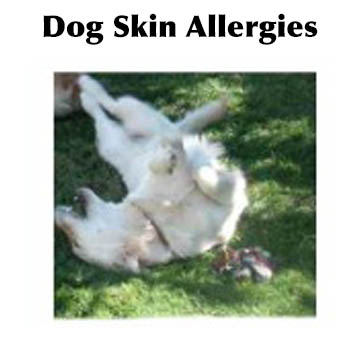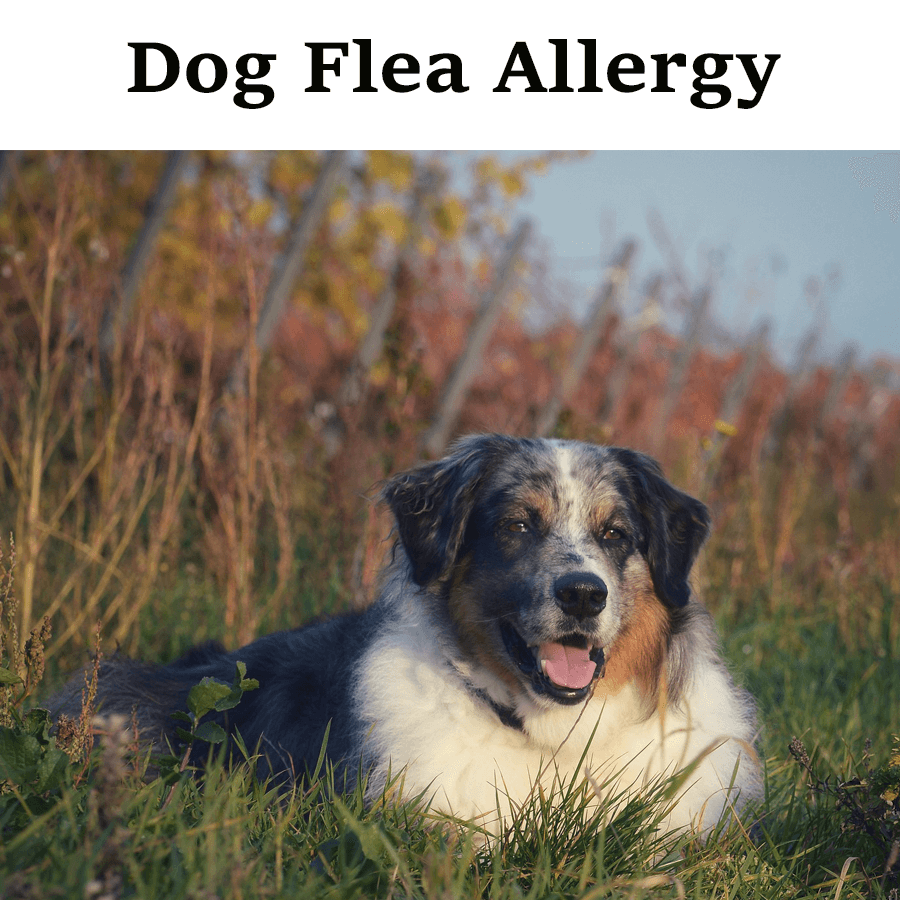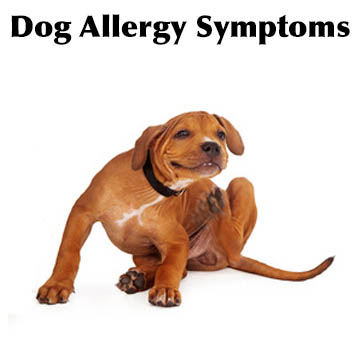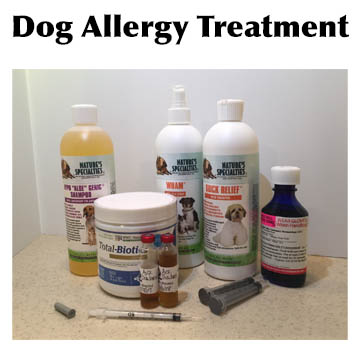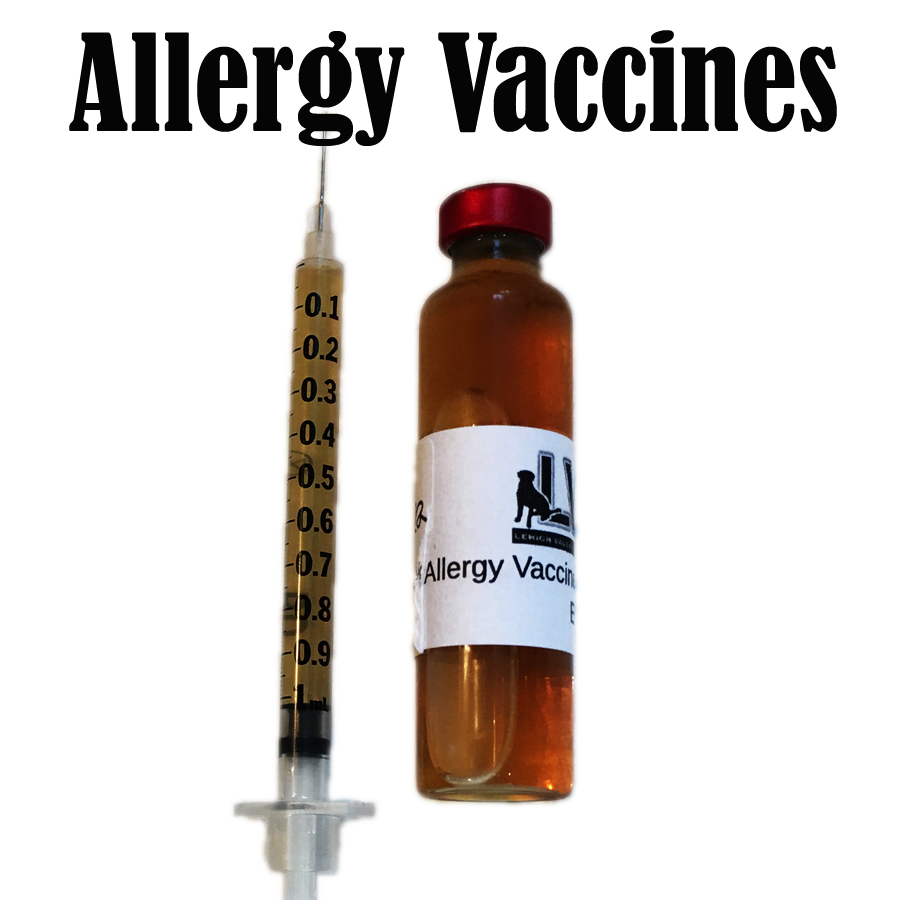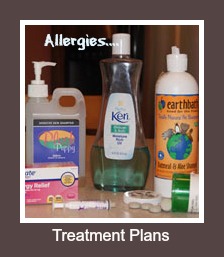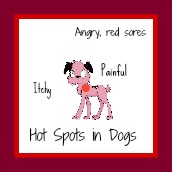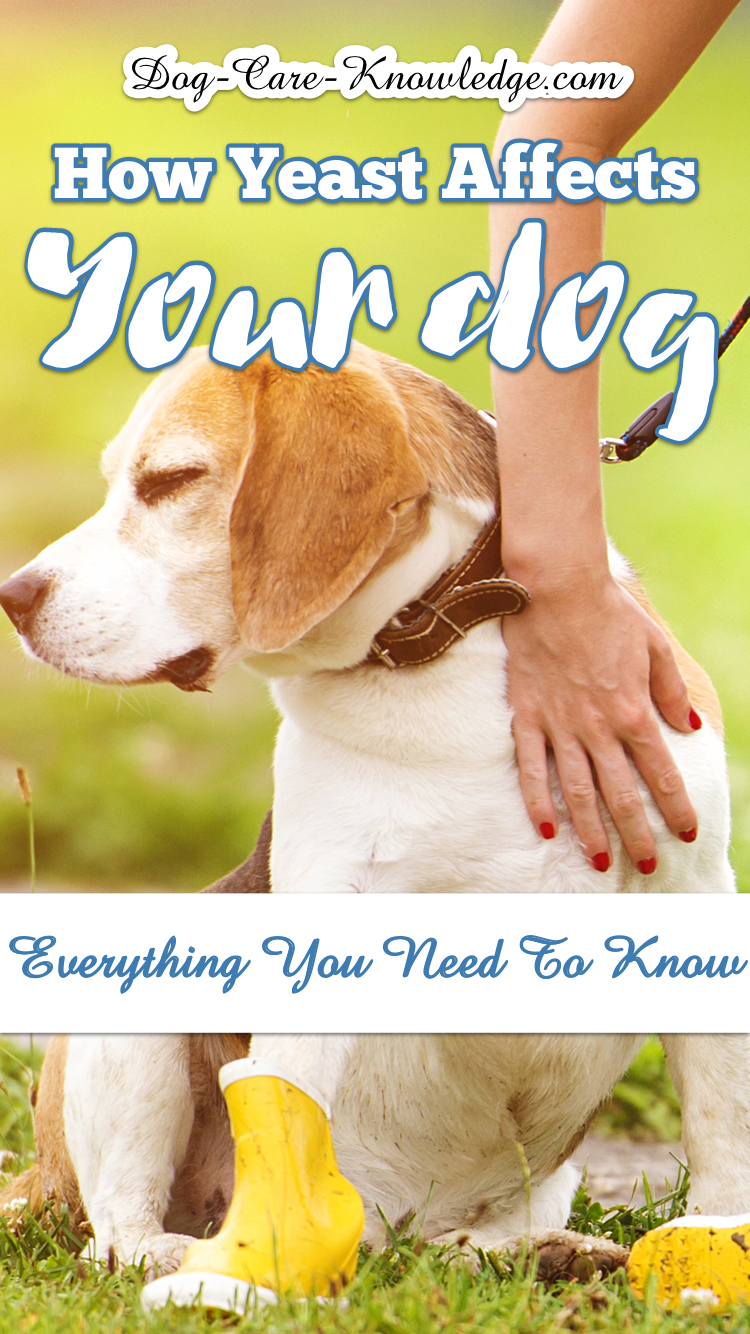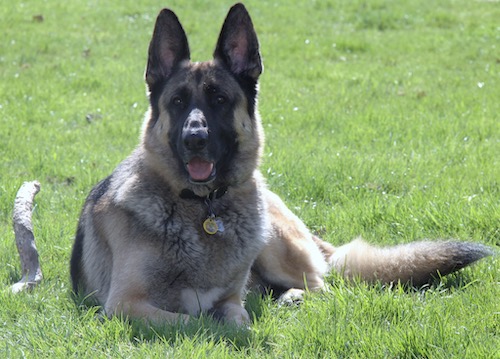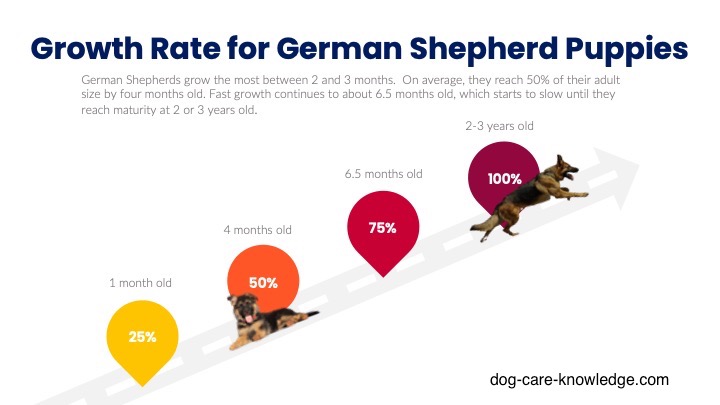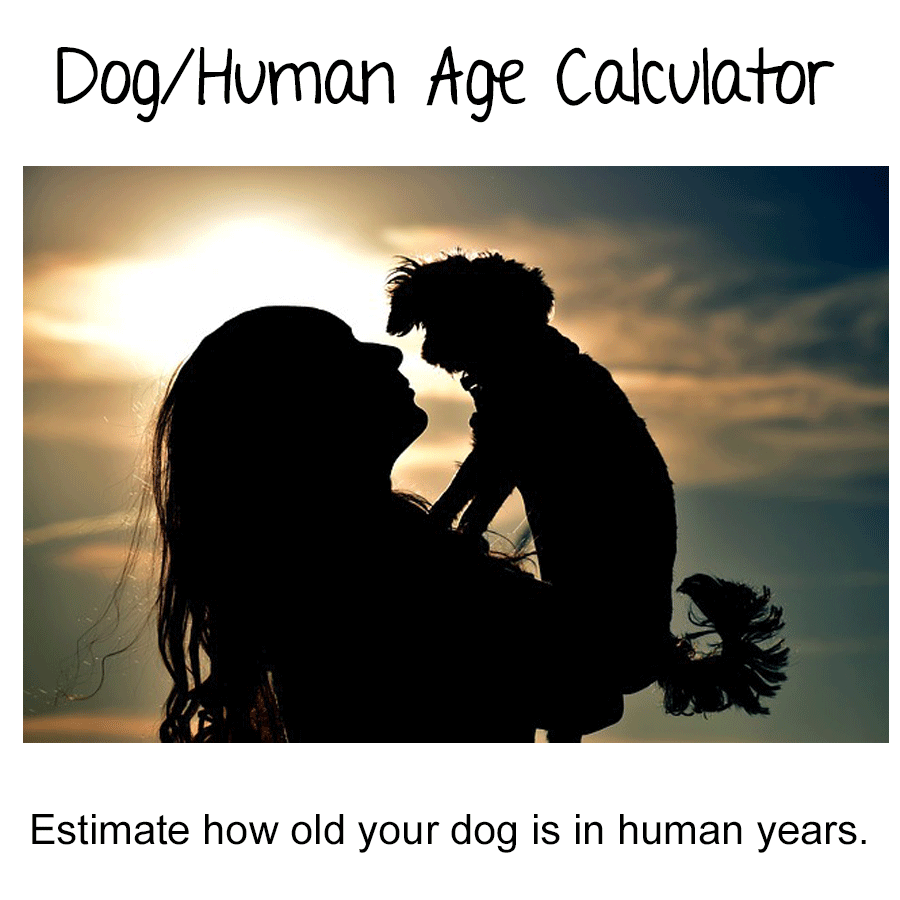- Home
- Dog Allergies
Types Of Canine Allergies
Canine allergies are the most common type of skin problems in dogs. You can't always avoid the cause but you can manage and control the symptoms at home. Here are the main types and how to treat them.
Canine Allergies is the number one reason for vet visits costing an average of $183 for dog-parents.
We all recognize the typical signs of allergies in people; sneezing, runny nose, watery eyes, etc., but, did you know that allergies in dogs usually manifests as skin problems? And that the most common type of dog skin problems are related to canine allergies?
As with humans, there is no cure for canine allergies but, with a little bit of help, you should be able to make your pooch more comfortable in his own skin.
Is It An Allergy Or Yeast?
Having said that, there is one condition that is often misdiagnosed as an allergy as it has similar symptoms. Yeast!
Similar to canine allergies, yeast starts to
become a problem as soon as the weather gets warm. Yeast
loves to thrive in hot and humid conditions so tends to affects moist
areas on your dog. The most common areas are the ears, paws, anal area,
armpits, jowls and any skin folds your dog has. Luckily yeast is quite easy to deal with as long as you stay on top of it.
So, before you start treating your dog for allergies, make sure it's not yeast you are dealing with instead. Click here to see if your dog's allergies are in fact related to yeast instead and how it can be treated.
Types of Canine Allergies
Many of the dog allergy symptoms are similar, itchy dog, scratching, rubbing their face, licking paws, etc., So, to know how to treat the cause and not just the symptoms, you need to find out what the actual cause is. If its allergies, you need to figure out exactly what type of allergy your dog is suffering from and get them on the right dog skin allergy treatment plan.
There are predominantly 4 types of canine allergies....and then there are skin allergies. The 4 types are:
- Flea allergy
- Inhalant allergy
- Food allergy
- Contact allergy
Technically, skin allergies aren't a type of allergy at all but are the main symptom of any of the allergy types listed above. Allergies in dogs usually manifest as skin problems so are frequently referred to as skin allergies.
But don't worry, I can help you figure out what type of allergy your pet is suffering from and provide some good recommendations on what treatments will work for each, including the skin.
WARNING - if your dog's face is puffy or swollen, SEEK IMMEDIATE VET CARE NOW. This is a symptom of a potentially life-threatening allergic reaction.
If it is out of regular veterinary hours then call an emergency veterinary clinic. Don't wait until your vet is open to address this serious issue.
1) Flea Allergy
A flea allergy, (flea allergy dermatitis) is the most common type of all canine allergies. Dogs affected with this will be itching and scratching as the weather gets warmer. Of course dogs that live in a climate that is warm or hot all year round, may be affected all year too. Unfortunately it doesn't take an infestation of fleas for a dog with an allergy to them to start itching madly. Just one flea bite is enough to make these dogs miserable with itching and scratching.
Most often the area affect is the base of the tail or rump of the dog and often results in hair loss in this area but can quickly spread to the rest of the dog. You can find more symptoms and diagnosis of a specific flea allergy here.
If your dog has an allergy to fleas then you really need a treatment plan that focuses on:
- Total elimination of fleas on dog
- Eliminate fleas from dog's environment (bed, carpets, sofas, etc)
- Stop flea reproduction on dog and in environment
- Treat infestation in yard and other outdoor areas frequented by the dog
- Protect against fleas in general population (e.g. out on walk)
The good news is that you can usually treat a flea allergy in dogs at home.
See here for full details of a dog flea allergy treatment plan.
Diagnosis:
To check if your pooch has fleas, stand him on sheet of white paper and brush his coat. If flea eggs and waste are present you should see white or black grains of sandy material drop onto the sheet. A vet can confirm the diagnosis quite easily by conducting an intradermal skin test but this is usually unnecessary.
If you see evidence of fleas or a flea allergy, you can treat it without a vet visit.
The best treatment is a medicated bath and Benadryl for the itching. You will also need to put your dog on some form of topical monthly flea treatment. I recommend either Advantage, Advantix, Frontline Plus or Vectra 3D.
A word of warning, stay away from those flea collars they aren't as good as topical treatments and can cause more skin irritation and even health problems.
If you do see evidence of fleas, you'll need to treat the whole environment to prevent the fleas from multiplying. See flea and tick control for more information on control and prevention.
See here for full details of a dog flea allergy treatment plan.
2) Inhalant Allergy
Inhalant allergies (also known as Canine Atopy/Atopic Dermatitis) are similar to what we think of when we get allergies ourselves. And just like ours, they are caused by inhaled allergens e.g. grasses, dust mites, molds and pollens that are either inhaled by our dogs or absorbed by their skin.
Inhalant allergies are the second most common cause of allergies in dogs. As we see with human allergies, dog inhalant allergies are most common in the warmer weather, again, springtime especially.
Unlike us though, our dogs are most likely to be itching and scratching a lot, coupled with face-rubbing and belly scratching. Inhalant allergies can begin at any age but most start to occur from the ages of one to four years old. My dog, Ava, has this type of allergy, you can read more on her story, how it progressed, and how I managed to control the symptoms here.
Over time, dogs can become allergic to more and more things which can make this allergy turn into year-round problem, this also happened with Ava.
For instance, they might start with being allergic to grass and pollen and only displaying symptoms in warm weather, but as time goes on, they may become allergic to dust mites or something else in the house and will be itching all year long.
See here for a full list of all Inhalant Allergy Symptoms

Diagnosis:
To be completely sure, there are two types of tests you can ask your vet to perform that can determine what your dog is allergic to; blood tests and skin tests. Your vet can perform these tests to pin-point what your dog should avoid or at least limit his exposure to.
To be perfectly honest, and dependent on what your pooch is allergic to, avoidance is often pretty difficult. For instance, one of my dog's top allergens is to human dander, which basically means she is allergic to me or anyone else. So avoiding all contact with humans is just not going to happen!
If you do find that your dog has inhalant allergies, and suffers
quite badly, then I would advise a trip to the vets as they may be able
to prescribe something better for the symptoms. Some dogs, mine
included, cannot tolerate Benadryl as this gives them diarrhea.
See here for a treatment plan for inhalant allergies.
3) Dog Food Allergy

Dog food allergies are not as common as we may think. Most dog food allergies are to the natural components i.e. meat, milk, eggs, grains, etc. Despite what the food manufacturers will have us believe, only 10% of canine allergies are related to food.
However, dogs can be intolerant or sensitive to certain foods that manifest as skin and digestive issues which often looks like an allergy.
A food allergy can develop at any time, in fact, it is likely to develop after he has been eating the same food for a certain amount of time, usually 1-2 years.
The symptoms are pretty similar to other allergies, except, dogs with food allergies usually develop a rash and will itch all year long. Not just in warm weather.
Another key indicator that your dog is suffering from food allergies is if the cause of your dog's itching is NOT relieved with Benadryl or other anti-itch medication.
Diagnosis:
It's difficult to tell if you dog is allergic or just intolerant to foods. Luckily there are a couple of tests you can do that takes the guess work out of determining what foods your dog is reacting to. See here for more details on Canine Food Allergies.
The only other way to diagnose a food allergy is by conducting a novel food trial. That basically means giving your pooch food he's never had before.
But, be warned, it is not as easy as swapping your dog's diet for a different brand. I know many dog food manufacturers claim that their diets are good for dogs with allergies, but in reality, most dog foods have similar ingredients.
Granted, the premium dog foods are way better than the cheaper brands but if you suspect your dog has a food allergy its much better to try the Nutriscan test, or work with your vet to determine the root cause.
When you've determined that your dog does have a food allergy you can then figure out what foods are safe for your dog and which ones to avoid.
4) Contact Allergy
A contact allergy (otherwise known as Contact Hypersensitivity, Contact Dermatitis) is when your dog is allergic to something that he has come into contact with. This is usually immediate and, along with itching, you'll likely see raised red bumps.
See here for symptoms of contact allergies.
Diagnosis:
If you suspect your dog has a contact allergy, you need to identify what the cause is and eliminate it from the environment. Easier said than done, I know. Luckily a contact allergy is quite sudden so you only usually need to think of what you have introduced into his environment that day.
It can be the easiest allergy to treat but sometimes requires a little bit of detective work to figure out what your dog came into contact with. Contact allergies rarely require a visit to your vets.
The most typical offenders to cause contact allergies are carpet
cleaners or fresheners, shampoos or any other product that you use on
your dog or the floors.
See here for the best treatment plan for contact allergies.

This is one of the most easiest dog skin allergies to treat as long as you can remove the cause from your dog's environment.
Although canine allergies cannot be cured they can be adequately managed and controlled. Early detection and preventative treatment is the key to success.
Of course, canine allergies are not the only cause of dogs itching and scratching.
If you don't think that the cause of your dog's scratching is related to canine allergies, or you just need more information, please review our other skin problems related to dog skin care
